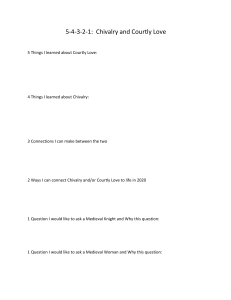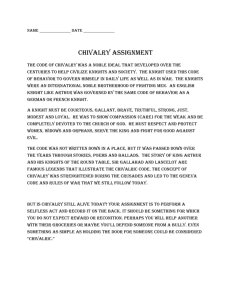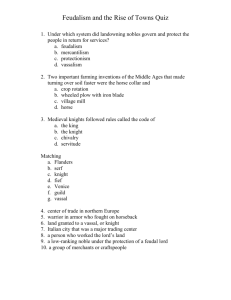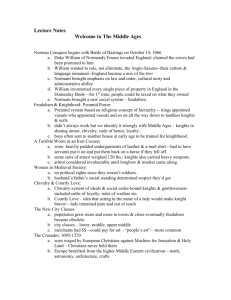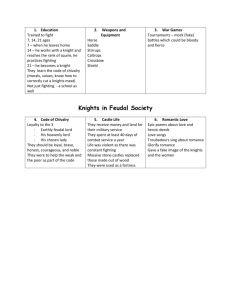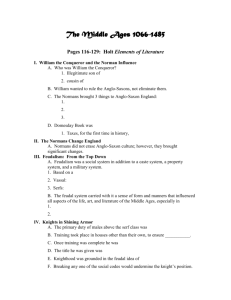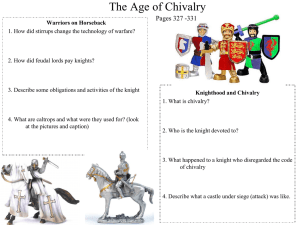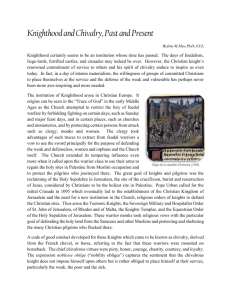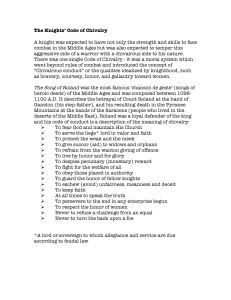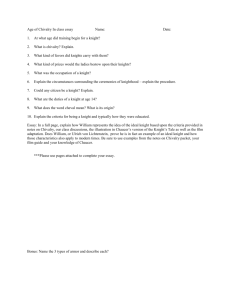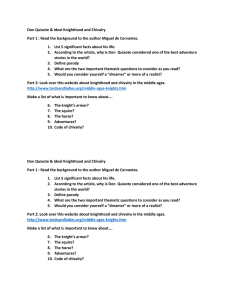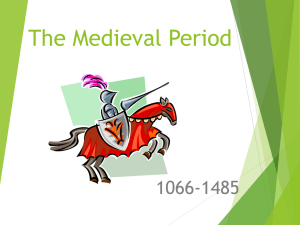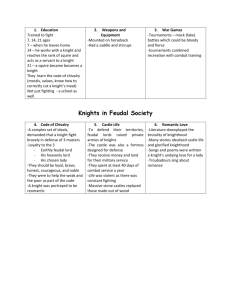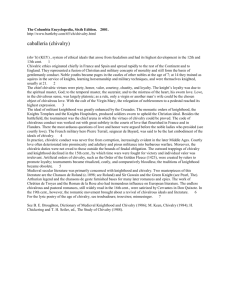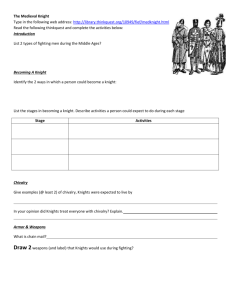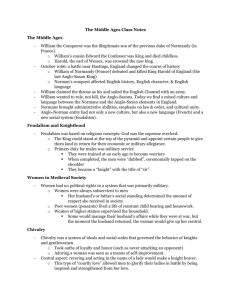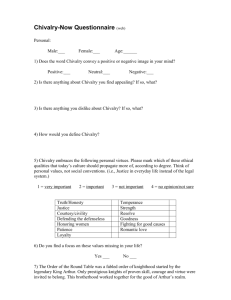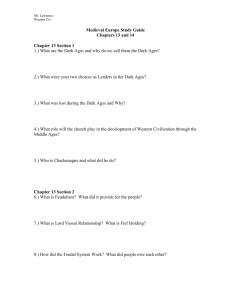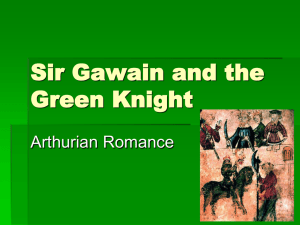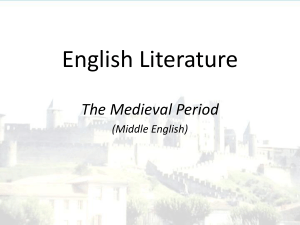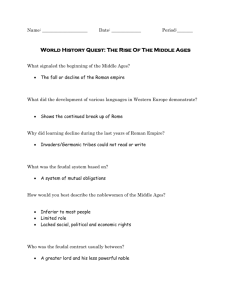English 12 Senior Seminar December 2013 The Middle Ages
advertisement
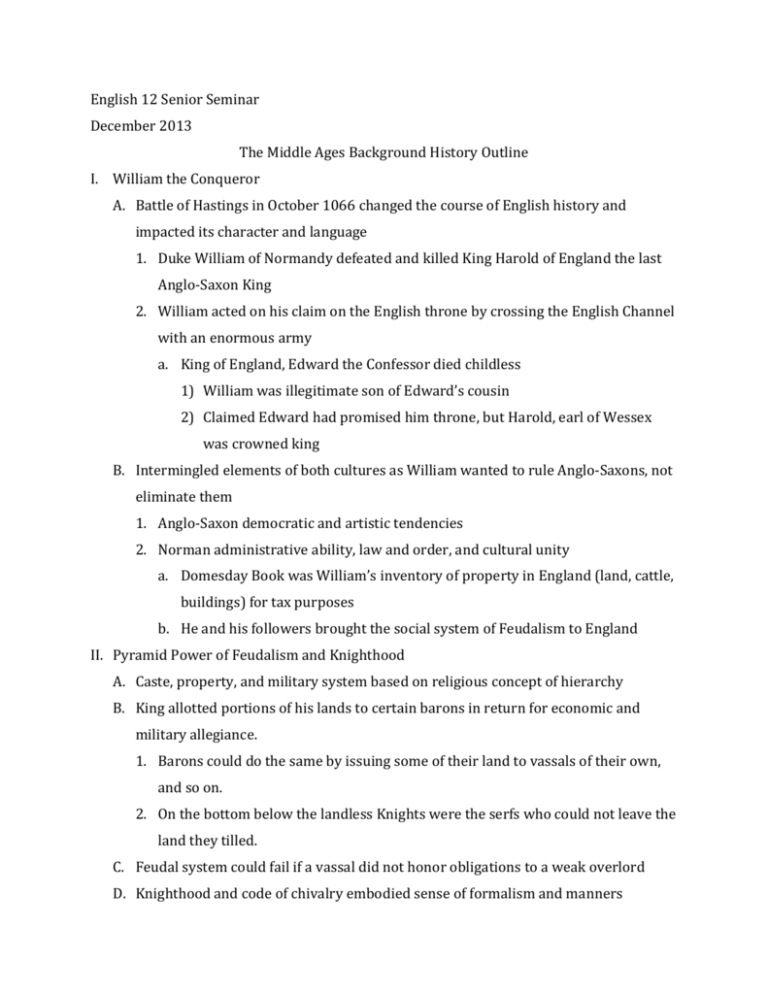
English 12 Senior Seminar December 2013 The Middle Ages Background History Outline I. William the Conqueror A. Battle of Hastings in October 1066 changed the course of English history and impacted its character and language 1. Duke William of Normandy defeated and killed King Harold of England the last Anglo-Saxon King 2. William acted on his claim on the English throne by crossing the English Channel with an enormous army a. King of England, Edward the Confessor died childless 1) William was illegitimate son of Edward’s cousin 2) Claimed Edward had promised him throne, but Harold, earl of Wessex was crowned king B. Intermingled elements of both cultures as William wanted to rule Anglo-Saxons, not eliminate them 1. Anglo-Saxon democratic and artistic tendencies 2. Norman administrative ability, law and order, and cultural unity a. Domesday Book was William’s inventory of property in England (land, cattle, buildings) for tax purposes b. He and his followers brought the social system of Feudalism to England II. Pyramid Power of Feudalism and Knighthood A. Caste, property, and military system based on religious concept of hierarchy B. King allotted portions of his lands to certain barons in return for economic and military allegiance. 1. Barons could do the same by issuing some of their land to vassals of their own, and so on. 2. On the bottom below the landless Knights were the serfs who could not leave the land they tilled. C. Feudal system could fail if a vassal did not honor obligations to a weak overlord D. Knighthood and code of chivalry embodied sense of formalism and manners 1. Knights began training to become warriors as boys at an early age 2. Once “dubbed” ceremonially as a knight, they gained title “sir” 3. Knighthood grounded in loyalty and complex system of social codes III. Women in Medieval Society: No Voice, No Choice A. In this military society, women had no political rights B. Women were subservient and dependent on father’s or husband’s social standing C. Peasant women had to handle childbearing, housework, and fieldwork IV. Chivalry and Courtly Love: Ideal but Unreal A. Chivalry involved oath of loyalty to the overlord, rules of warfare, and adoring a particular lady B. Revering and acting in the name of a lady was central to chivalry and thought to make a knight braver and better C. Lady always remained pure and was set above her admirer D. While it idealized women, it did not improve the reality of their social position E. Did not follow human nature, but was often dramatized by poets and storytellers and gave rise to Romance literature 1. King Arthur, Lancelot, and Queen Guinevere story exemplifies how the social system falls apart when physical love replaces courtly love 2. Sir Gawain and the Green Knight is greatest example of English romance V. The New City Classes: Out from under the Overlords A. Population growth gave rise to towns and cities which would eventually render feudal system obsolete B. Emerging merchant class were not tied to lord’s land, knighthood, and chivalry C. Middle class had the ability to pay for what it wanted and gave rise to “people’s art” VI. The Great Happenings A. The Crusades (1095-1270) 1. European Christians sought to take Jerusalem and Holy Lands from the Muslims 2. Europe benefitted from exposure to higher civilization of the Middle East with its mathematics, astronomy, architecture, and crafts B. Martyrdom of Thomas a Becket 1. King Henry appoints his trusted friend and chancellor as archbishop of Canterbury, the head of the Catholic church in England 2. Thomas instead of supporting his friend the King in disputes with the church, often side’s with the Pope 3. Four knights of Henry took the King’s complaints about Thomas literally and murdered him in his cathedral. a. Public outrage created a backlash against King Henry b. Also resulted in corrupt behavior by clergymen in England 4. Church still fostered cultural unity through a common system of beliefs and symbols greater than national cultures of Europe a. Center of learning, libraries and publishers b. Pope was king of kings C. Magna Carta 1. King John signs document in 1215 at Runnymede a. Forced by barons to enforce their rights b. Also reduced central papal power c. Didn’t provide rights to common people but was the basis for future English Constitutional law such as trial by jury and legislative taxation D. Hundred Years War 1. England versus France 1337 – 1453 based on dubious claims the throne of France by English kings Edward III and Henry V 2. While unsuccessful for the English, developed a British national consciousness 3. Knight in shining armor gives way to the rise of the English yeoman with his longbow a. Yard long arrows could fly over castle walls and pierce armor E. Black Death 1. Bubonic Plague struck England in 1348 – 1349 2. Spread by fleas from infected rats 3. Reduced England’s population by a third a. Labor shortage gave lower classes more leverage against overlords b. Serf’s freedom signified end of feudalism

